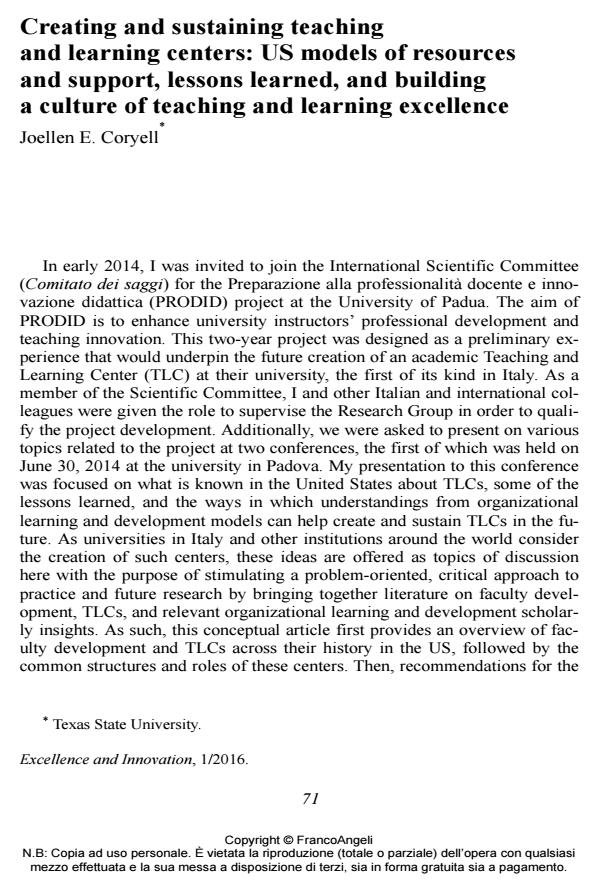Creating and sustaining teaching and learning centers: US models of resources and support, lessons learned, and building a culture of teaching and learning excellence
Titolo Rivista EXCELLENCE AND INNOVATION IN LEARNING AND TEACHING
Autori/Curatori Joellen E. Coryell
Anno di pubblicazione 2016 Fascicolo 2016/1
Lingua Inglese Numero pagine 13 P. 71-83 Dimensione file 51 KB
DOI 10.3280/EXI2016-001005
Il DOI è il codice a barre della proprietà intellettuale: per saperne di più
clicca qui
Qui sotto puoi vedere in anteprima la prima pagina di questo articolo.
Se questo articolo ti interessa, lo puoi acquistare (e scaricare in formato pdf) seguendo le facili indicazioni per acquistare il download credit. Acquista Download Credits per scaricare questo Articolo in formato PDF

FrancoAngeli è membro della Publishers International Linking Association, Inc (PILA)associazione indipendente e non profit per facilitare (attraverso i servizi tecnologici implementati da CrossRef.org) l’accesso degli studiosi ai contenuti digitali nelle pubblicazioni professionali e scientifiche
This article represents an expanded discussion of a presentation on teaching and learning centers (TLCs) to an Italian national conference on the components of a research project entitled, Preparazione alla professionalità docente e innovazione didattica (PRODID). The article aims to highlight an overview of findings from the research and practice literature regarding TLCs across their history in the United States, including the common structures and roles of these centers. Finally, the author provides theoretical underpinnings from organizational learning and development that are recommended for practice in creating and sustaining effective TLCs including the importance of co-creating value for teaching and learning excellence, building an inclusive learning culture within institutions of higher education, and managing and sustaining organizational change. Suggestions for further research are also provided.
Parole chiave:Teaching and learning centers; faculty development; learning culture in higher education
- Engaging Transformative Organizational Learning to Promote Employability Loretta Fabbri, Alessandra Romano, in New Directions for Adult and Continuing Education /2019 pp.53
DOI: 10.1002/ace.20341
Joellen E. Coryell, Creating and sustaining teaching and learning centers: US models of resources and support, lessons learned, and building a culture of teaching and learning excellence in "EXCELLENCE AND INNOVATION IN LEARNING AND TEACHING" 1/2016, pp 71-83, DOI: 10.3280/EXI2016-001005